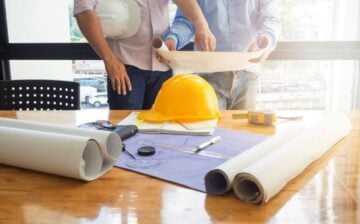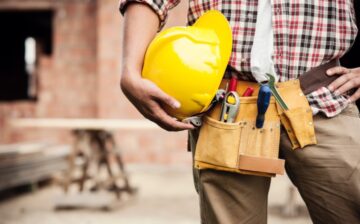Sidewalks are the unsung heroes of town infrastructure. They manual pedestrians effectively through neighborhoods, join communities, and beautify scale back appeal. But like several forms uncovered to the elements and constant use, sidewalks are prone to damage. Cracks, choppy slabs, and crumbling edges aren’t certainly eyesores—they’re safety dangers and capability liabilities. Understanding the maximum commonplace motives of sidewalk harm and how to cope with them quickly can maintain assets proprietors time, cash, and felony complications.

1. Tree Roots: Nature’s Subterranean Wrecking Crew
Tree roots are one of the maximum common culprits behind NYC sidewalk upheaval. As roots grow and increase, they push against the concrete from under, causing slabs to reinforce, crack, or tilt. This is mainly common in older neighborhoods in which mature timber line the streets.
To repair root-associated damage, the first step is figuring out the offending roots. In a few times, root pruning or putting in root barriers can save you further intrusion. However, if the roots belong to town-owned bushes, asset owners can also want to coordinate with nearby authorities in advance rather than taking action. Once the roots are addressed, the damaged slab may be removed and modified. For minor lifting, surface grinding may be enough to degree the sidewalk without full opportunity.
2. Freeze-Thaw Cycles: The Silent Destroyer
In colder climates, freeze-thaw cycles wreak havoc on concrete. Water seeps into small cracks or pores within the sidewalk, then freezes and expands, widening the cracks and weakening the shape. Over time, this repeated expansion and contraction results in crumbling edges, floor flaking, and deep fissures.
Preventing freeze-thaw harm begins with sealing the concrete to reduce water infiltration. For present damage, small cracks can be full of flexible concrete caulk or epoxy fillers. Larger cracks or spalling can also require resurfacing or changing the affected section. Using air-entrained concrete throughout the setup can also assist the sidewalk better resist freeze-thaw stress in the destiny.
3. Poor Soil Conditions and Erosion
Sidewalks rely upon a stable base to live stage and intact. When the soil beneath a sidewalk shifts, erodes, or settles inconsistently, the concrete above can sink, tilt, or crack. This is often due to poor compaction at some stage in set up, water runoff, or underground plumbing leaks.
To fix sunken or choppy slabs, mudjacking or polyurethane foam injection can convey the concrete decrease again into region without full replacement. These techniques contain injecting material below the slab to fill voids and raise the ground. In more extreme cases, changing the slab and improving the subgrade with compacted gravel or sand may be essential to save your destiny settling.
4. Heavy Loads and Traffic Stress
Although sidewalks are designed for foot website online visitors, they sometimes endure more weight than meant. Delivery trucks, introduction devices, or even parked motors can pressure the concrete, leading to cracks, fractures, or complete breakage. Repeated strain weakens the structural integrity of the slab, particularly if it is not reinforced throughout installation.
The awesome restore for load-associated harm is to cast off and update the affected slab with strengthened concrete. Adding rebar or wire mesh all through the pour can enhance sturdiness. Property proprietors need to moreover take steps to save you destiny damage through putting in obstacles or signage to keep heavy vehicles off pedestrian pathways.
5. Substandard Construction and Materials
Not all sidewalks are created the same. Poor workmanship, low-first-rate substances, or shortcuts during set up can reason untimely deterioration. Common signs encompass early cracking, choppy surfaces, and fast placed on. Inadequate curing, incorrect joint spacing, or insufficient thickness can all make contributions to early failure.
Addressing this problem frequently requires a full opportunity of the faulty phase. When hiring a contractor, it’s critical to verify their credentials, test evaluations, and make certain they examine neighborhood building codes and necessities. Using superb, well mixed concrete and allowing ok curing time can substantially expand the life of a sidewalk.
Final Thoughts
Sidewalk harm is more than a splendor concern—it’s a safety problem and a functional legal criminal responsibility. Whether because of nature, climate, or human errors, the critical issue to powerful sidewalk protection is early detection and set off restore. By experiencing the top motives of damage and knowing a manner to reply, property owners can guard their investment, beautify lower attractions, and maintain their walkways secure for each person. Navigating NYC’s sidewalk restore suggestions just were given much less tough Nycsidewalkviolations.com is your one-prevent resource for expertise, resolving, and stopping highly-priced citations.
We hope you found this blog post on Top 5 Causes of Sidewalk Damage (and How to Fix Them Fast), useful. Be sure to check out our post on Changes That Will Easily Boost Your Outdoor Space for more great tips!
Have Experience in the Moving Industry? Want an Additional Income Stream? Work With All Around Moving!
We’ll help you make money. This program gives the opportunity to experienced moving consultants to run their own Moving Consultant business from anywhere in the United States. Click here to learn more about it.





